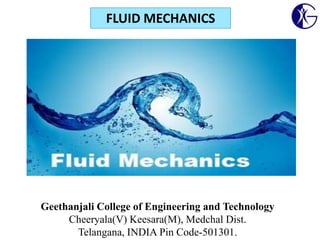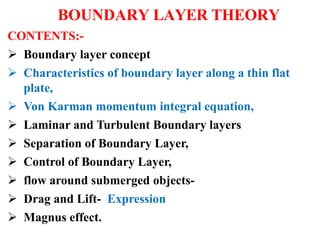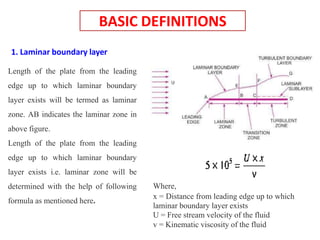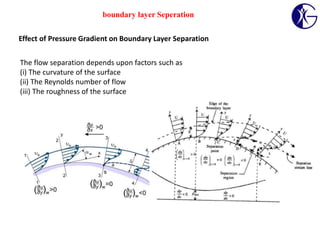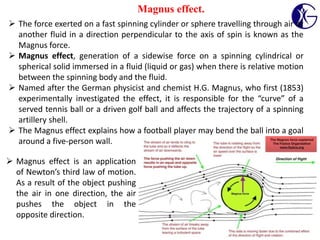The document discusses fluid mechanics focusing on boundary layer theory, detailing the concepts of laminar and turbulent boundary layers, their characteristics, and the effects of separation. It explains how fluid velocity changes near a solid boundary and introduces important parameters such as boundary layer thickness, displacement thickness, and momentum thickness. Additionally, it addresses drag and lift forces experienced by bodies in fluid flow and introduces the Magnus effect, which influences the trajectories of spinning objects in fluids.
